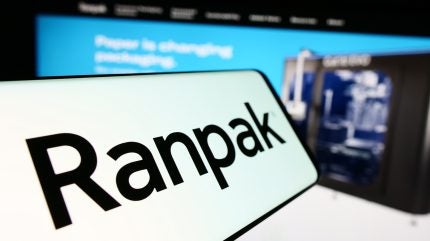
Paper‑based packaging systems supplier Ranpak Holdings has posted a net loss of $10.4m for the third quarter (Q3) of 2025.
In the same quarter of 2025, the US‑based company reported a net loss of $8.1m.

Discover B2B Marketing That Performs
Combine business intelligence and editorial excellence to reach engaged professionals across 36 leading media platforms.
Net revenue for Q3 2025 rose 8% year‑on‑year to $99.6m, or 4.4% on a constant‑currency basis. This growth was driven primarily by automation, void‑fill and wrapping product lines.
On a segment basis, cushioning revenue rose 0.3%, void‑fill increased 4.8% and wrapping grew 9%. Automation net revenue saw the largest gain, up 63%.
Ranpak attributed the overall increase in Q3 net revenue versus the previous year to a 4.5% rise in automated equipment sales, a 3.6% benefit from foreign currency movements and a 1% uplift from price or mix in paper consumables.
These gains were partly offset by a 0.3% fall in consumables sales volume and included a 0.8% non‑cash reduction related to the provision for warrants.

US Tariffs are shifting - will you react or anticipate?
Don’t let policy changes catch you off guard. Stay proactive with real-time data and expert analysis.
By GlobalDataAdjusted earnings before interest, taxation, depreciation and amortisation improved 8.1% year‑on‑year, or 3.5% on a constant‑currency basis. The company credited the improvement to “top‑line leverage and disciplined cost management.”
Ranpak closed the quarter with a cash balance of $49.9m and no draws on its $50m revolving credit facility, which matures in December 2029.
Ranpak chairman and CEO Omar Asali stated: “Our third quarter was a major stepping stone towards achieving the expected long-term growth outlook for Ranpak. In August, we signed a partnership and warrant agreement with Walmart that was forged through our innovations in Automation.
“While the terms of the Walmart agreement specifically exclude the cost of paper for purposes of determining the vesting of warrants, we estimate, based on current paper pricing, that this implies up to roughly $700 million in total spend over the life of the contract to achieve full vesting.”



